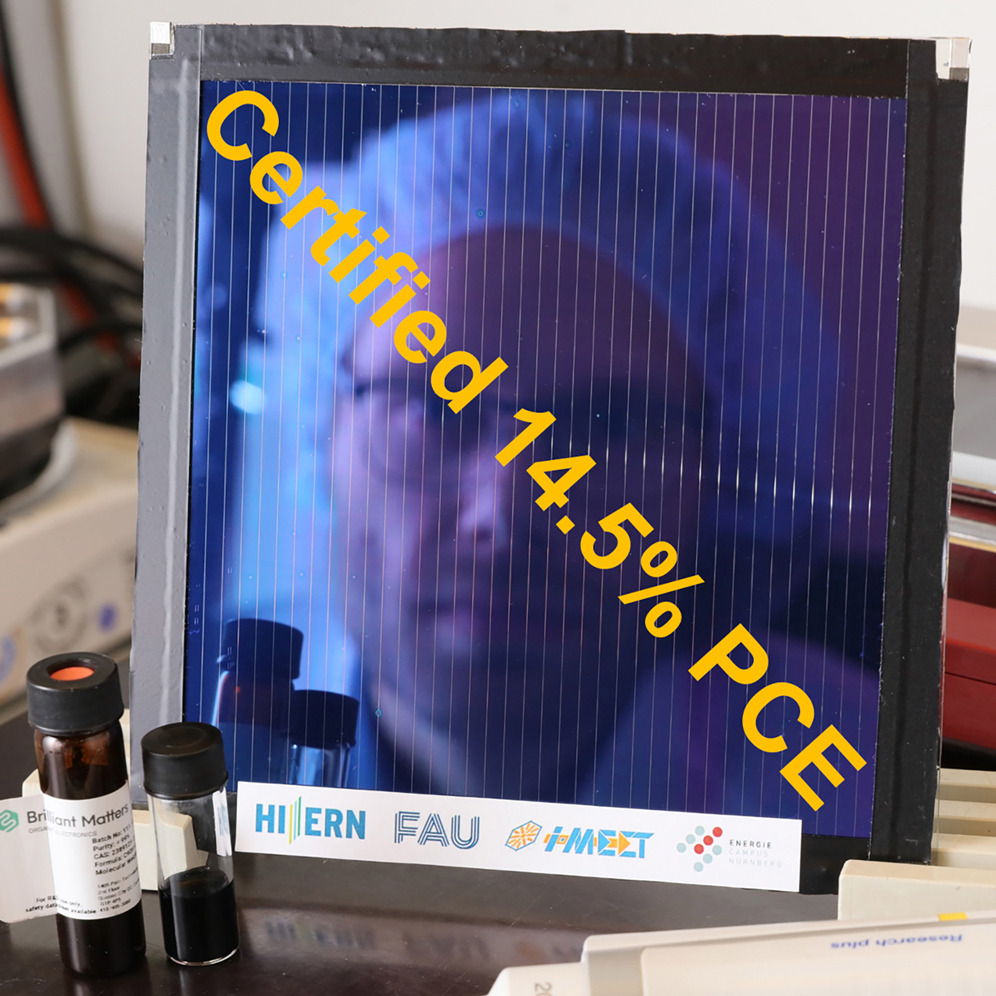Brilliant Matters’ Materials Used in World Record OPV Module!
#PressReleaseA new record in thin-film solar energy has been reached!
Using materials made by Brilliant Matters, researchers from FAU and HI-ERN broke the record for printed organic solar cells with an impressive module efficiency of 14.5%. This illustrates how advancements in OPV technology can now be used to create large area modules, marking a significant step towards producing competitive commercial panels.
Performances of organic solar cells have seen some impressive advances recently, surpassing 20 % efficiency and approaching silicon panel performance. However, these results were only demonstrated for pixel-sized devices and early studies were casting doubts these advances would be transferable to larger sized modules. Thus, it is extremely encouraging to see this German team achieve such a high performance on a sizeable demonstrator of 204 cm², all while using scalable fabrication techniques.
Brilliant Matters’ development team was honored to collaborate with such talented researchers by providing carefully designed next-generation materials, with improved printability and efficiency. By focusing on purity and batch-to-batch quality, we help our partners and customers continue to achieve improved performance for OPV modules in the future and contribute to transferring the technology to the commercial scale.
We see this demonstration as a significant step towards our long-time dream of seeing printed organic solar panels make an impact in the energy market. If fully realized, the potential of this technology is to become one of the most affordable energy sources ever made, applicable almost anywhere due to its true flexibility, optical properties (semi transparent) and light weight. One step at a time, we can bring to life a green energy revolution, with the vision of thin film solar panels as key power sources to future smart cities.
Contact us if interested in learning how BM can help with your Printed electronics projects
Links:
PBDB-T-2F (PM6) and BTP-4F-12 (Y6-12) used in this study were produced by Brilliant Matters




